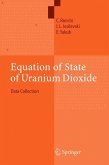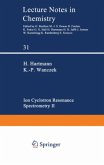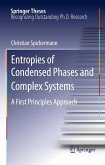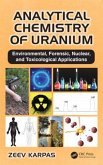The monograph deals with the thermodynamic properties of fluid uranium dioxide, one of the most investigated materials of the last century, up to its critical point. It presents an exhaustive theoretical introduction to "quasi-chemical" models of liquids, as well as their behaviour under non-congruent vaporisation conditions. Particular emphasis is given to the properties of pure Coulombic systems and to the pseudoparticle approach, which enables the partition function to be expressed in a simple, but physically rigorous formulation. The construction of the equation of state of stoichiometric and non-stoichiometric uranium dioxide is described in distinct steps, from a critical assessment of the theoretical fundamentals to a thorough review of the pertinent thermochemical and thermophysical data. Calculations of the thermodynamic properties of UO2+x are performed for temperatures up to 10,000 K both for the condensed and gas phase. More than one hundred tables are collected in the Appendix, containing all relevant thermodynamic data.
In the beginning of the 1990's, in the course of the events which were rapidly cha- ing the political con?guration of the East European countries, the crisis which - vested the vast research apparatus of the former Soviet Union was entailing con- quences whose dimension and depth were immediately realized by the international scienti?c community. In the same years, however, the most important branch of nuclear energy - searchanddevelopment,inparticularthatconcerning?ssionreactor,wasworldwide undergoing a substantial reduction due to a variety of decisional situations. Yet, paradoxically, it was a very good fortune that a number of concerns on the future of nuclear research were shared by East- and West-European scientists, especially those who were working in advanced ?elds. In fact, the only hope for coping with an uncertain future was to erect bridges between similar institutions and employ safeguarding tactics linked to a long term collaboration strategy. A decade later, this proved to be a winning decision, since the revival of nuclear energy is presently starting from a basis of common intentions and a network of established cooperation, whose seeds are to be searched in those initial, individual e?orts.
Hinweis: Dieser Artikel kann nur an eine deutsche Lieferadresse ausgeliefert werden.
In the beginning of the 1990's, in the course of the events which were rapidly cha- ing the political con?guration of the East European countries, the crisis which - vested the vast research apparatus of the former Soviet Union was entailing con- quences whose dimension and depth were immediately realized by the international scienti?c community. In the same years, however, the most important branch of nuclear energy - searchanddevelopment,inparticularthatconcerning?ssionreactor,wasworldwide undergoing a substantial reduction due to a variety of decisional situations. Yet, paradoxically, it was a very good fortune that a number of concerns on the future of nuclear research were shared by East- and West-European scientists, especially those who were working in advanced ?elds. In fact, the only hope for coping with an uncertain future was to erect bridges between similar institutions and employ safeguarding tactics linked to a long term collaboration strategy. A decade later, this proved to be a winning decision, since the revival of nuclear energy is presently starting from a basis of common intentions and a network of established cooperation, whose seeds are to be searched in those initial, individual e?orts.
Hinweis: Dieser Artikel kann nur an eine deutsche Lieferadresse ausgeliefert werden.







